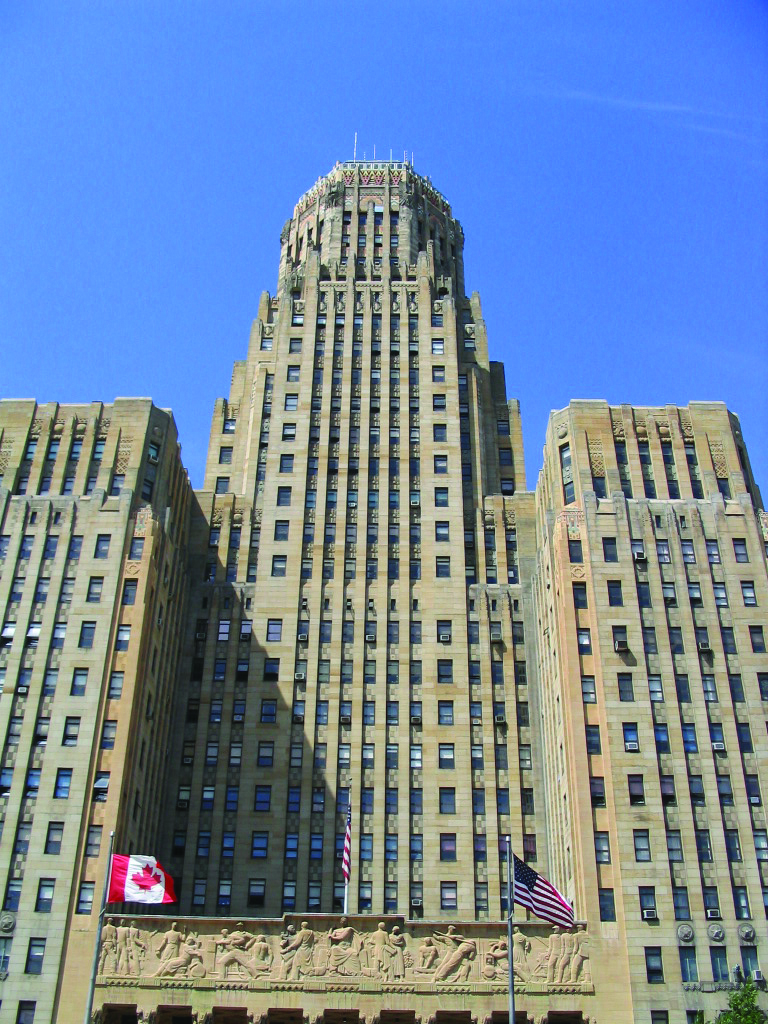
A masterpiece of Art Deco architecture, Buffalo, New York’s City Hall is a soaring structure that has overseen the waters of Lake Erie since 1929. Standing 32 stories high, the building is constructed of carved sandstone and terra cotta, and is comprised of a domed central tower, flanked by two side wings. The building is designated a historic structure by the U.S. Department of Interior.
After nearly 80 years of exposure to severe freeze and thaw cycles, the building required significant cleaning, as well as repair, stabilization or replacement of damaged stones. In addition, masonry joints needed to be repointed, Dutchman was in need of replacement, and parapets demanded reconstruction. The structure also needed to have sealant replaced on windows and doors, as well as complete restoration of the bronze windows on the first four floors of the building.
The project involves:
- Scaffolding up to the 15th floor of the building’s left wing
- Roof replacement on the 15th floor
- Reconstruction of parapets on 14th floor
- Cleaning and restoration of the left wing façade
- Epoxy injection into cracked stones
- Repointing of masonry joints
- Sealant replacement around windows and doors
- Repair or replacement of damaged stonework
- Stone carving to replicate the appearance of the existing sandstone blocks in the façade
- Cleaning and restoration of the main entrance area above the mezzanine up to the 15th floor
- Restoration of the building’s corners, where significant stone deterioration had occurred
- Restoration of bronze windows on the first four floors of the building
Project Details
Project Included
- Unit Stone Replacement
- Structural Steel Repair/Replacement
- Stonework
- Stone Patching
- Sealants
- Repointing Masonry
- Parapet & Coping Reconstruction
- Paint Removal
- Masonry Surface Rehabilitation
- Masonry Cleaning
- Lintel Replacement
- Flashings
- Dutchman Repair
- Chemical Cleaning
- Brickwork
- Alkaline Cleaners
- Acidic Cleaners
Glossary Terms